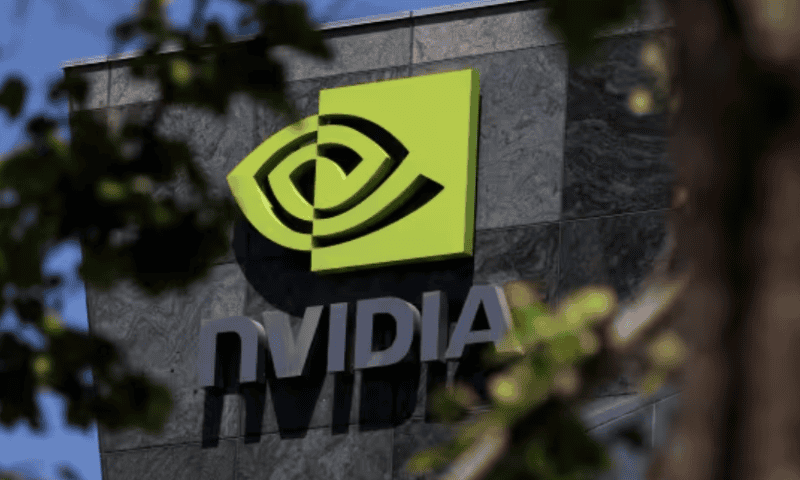Open interest in Nvidia options has eclipsed those tied to the S&P 500 — a development that one derivatives-market expert called ‘very unusual’
Nvidia Corp. shares could be in for a wild ride on Friday, as trading in contracts tied to the highflying chip maker has surged ahead of a record-setting June “triple witching” expiration.
Recently, investors have piled into bullish bets tied to Nvidia NVDA, +3.51% at a near-unprecedented pace, sending open interest on Nvidia call options above that of similar contracts tied to the S&P 500 SPX and a popular ETF that tracks the large-cap index, according to SpotGamma data.
Nvidia’s 10-for-1 stock split last week, along with the fact that its weighting in the $71 billion Technology Select Sector SPDR ETF XLK is expected to substantially increase via a rebalancing Friday, have helped to supercharge interest in bullish bets on the stock. Typically, monthly options expirations coincide with higher volume and choppier trade.
Buying Nvidia calls has become an increasingly popular trade over the past year due to the stock’s well-earned reputation as a reliable moneymaker. Nvidia shares have soared nearly 800% since the end of 2022, according to FactSet data.
“It seems like it doesn’t take much to get people to buy calls on Nvidia,” said Danny Kirsch, head of options at Piper Sandler, in an interview with MarketWatch. “It’s a little bit like Pavlov’s dog. The more you do it, the more money you seem to be making. So why would you stop?”
Nvidia options expire every week on Friday, but weeks where monthly options expire typically see higher volume and open interest, SpotGamma data show.
In addition to Nvidia options, monthly and weekly contracts tied to other individual stocks, indexes and ETFs will also expire on Friday, along with futures contracts tied to equity indexes like the S&P 500. The name “triple witching” is a reference to the fact that once a quarter, options tied to individual stocks, indexes and ETFs along with index futures all expire on the same day.
Roughly one-third of outstanding options tied to Nvidia are set to expire on Friday, according to data from SpotGamma. Furthermore, the scramble has pushed open interest on Nvidia options higher than the open interest on S&P 500 index options and options tied to the SPDR S&P 500 Trust ETF SPY, a situation that SpotGamma founder Brent Kochuba described as “very unusual.”
This Friday’s quarterly options expiration is set to be the biggest ever based on the notional value of the options, which stands at $5.5 trillion, according to SpotGamma data.
Notional value references the dollar amount of the underlying shares that the options control. Each option contract is tied to 100 shares of stock, while index options are typically settled in cash.
Some have speculated that the momentum driving Nvidia’s shares higher could subside following Friday’s options expiration, as a “gamma squeeze” that has helped propel shares higher eases.
In options-trading parlance, a “gamma squeeze” is a situation where heavy call buying forces options market makers to buy more shares of the underlying stock to hedge their positions. This can lead to a virtuous cycle where the hedging flows help push shares higher, necessitating even more hedging. “Gamma” measures how changes in the price of the underlying stock impact the price and potential return of an option contract.
But Kirsch said he isn’t so sure. Although it is tempting to conclude that the rally in Nvidia shares could cool off once options market makers have the opportunity to offload some of their hedges, it hasn’t worked out that way recently.
“There has been a ton of gamma, I agree — but there has always been a ton of gamma,” he said.
The option-buying frenzy in Nvidia really only has one recent precedent, Kochuba noted. In late 2021, trading in options tied to Tesla Inc. shares TSLA, -1.38% reached a fever pitch, helping to send the electric-vehicle manufacturer’s stock to record highs in early November of that year.
Nvidia shares finished Tuesday as the largest U.S. stock by market capitalization with a valuation of more than $3.3 trillion, surpassing Microsoft Corp. MSFT, -0.45% The accomplishment drew comparisons to Cisco Systems Inc.’s CSCO, +0.61% brief stint as the largest U.S. company, which occurred during the peak of the dot-com bubble in March 2000.

